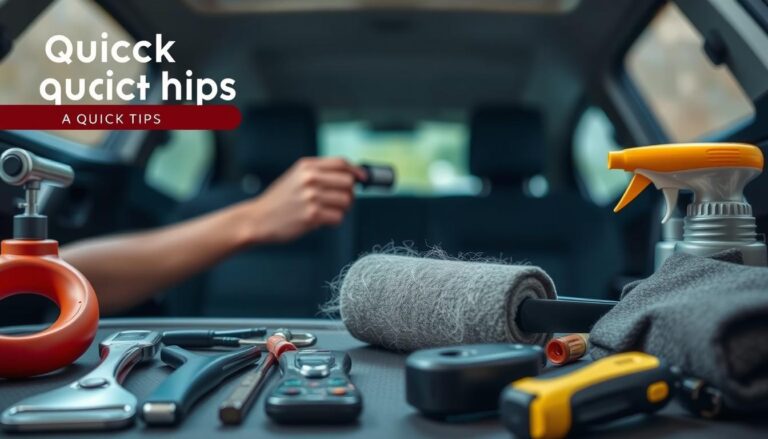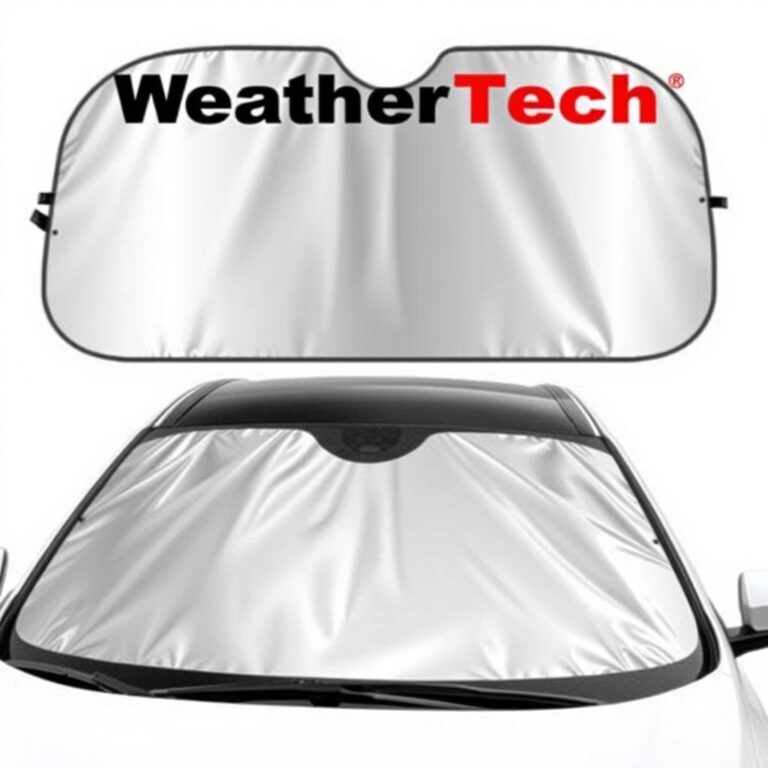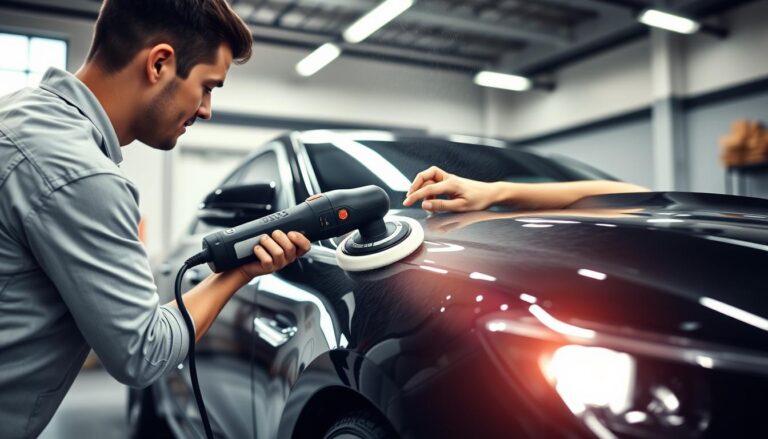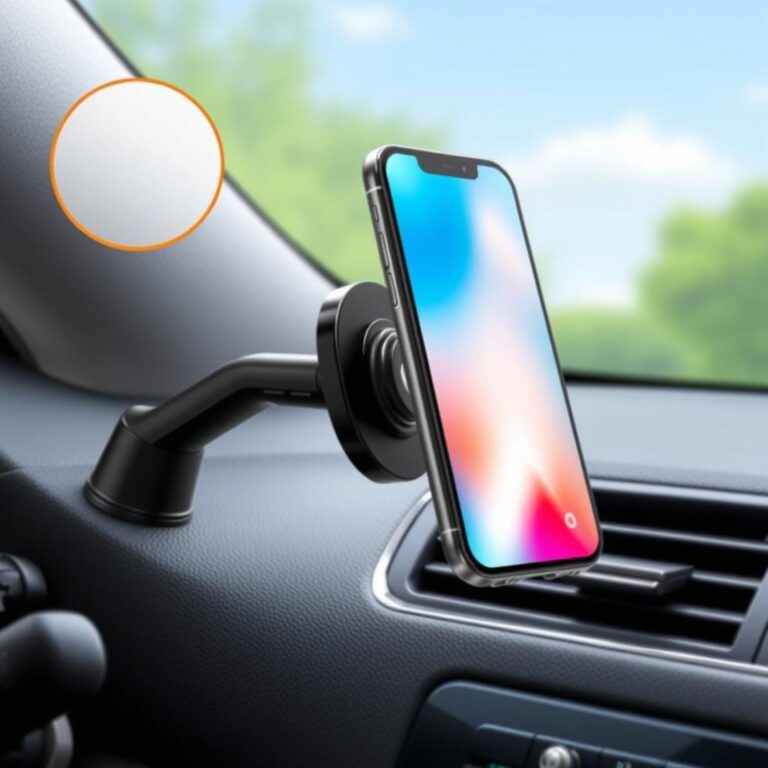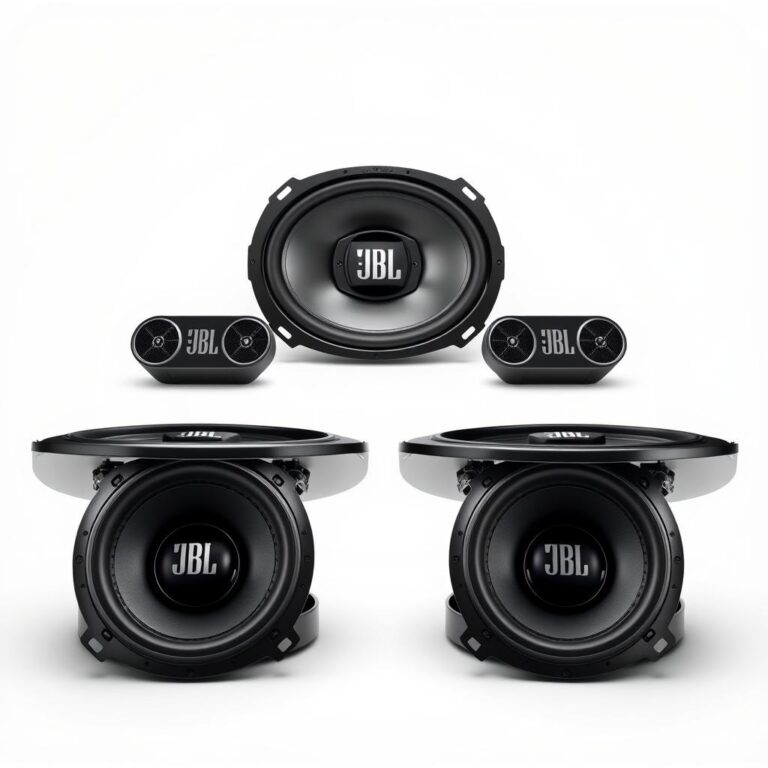Best Car Window Tint in 2025 – High Heat Rejection, UV Protection
If you’re looking to enhance your driving comfort while protecting your vehicle’s interior, investing in the best car window tint is a smart decision. Quality window tinting not only gives your car a sleek appearance but also provides crucial benefits like heat rejection, UV protection, and increased privacy. With numerous options available in 2025, choosing the right window tint can be overwhelming.
In this comprehensive guide, we’ll help you navigate the top window tint brands based on verified specifications including heat rejection percentages, UV protection levels, and visible light transmission. We’ve analyzed customer feedback, warranty coverage, and overall value to bring you the most reliable recommendations for your vehicle. Whether you’re concerned about reducing cabin temperature, protecting your interior from fading, or enhancing privacy, our expert selections will help you make an informed decision.
As an Amazon Associate, we earn from qualifying purchases.
Top 10 Best Car Window Tint Comparison
| Product Image | Model / Product | Best For | Heat Rejection (%) | UV Protection (%) | Visible Light Transmission (%) | Price Range | CTA |
| XPEL PRIME XR PLUS Editor’s Choice | Maximum Heat Rejection | 98% | 99.9% | 35% | $$$ | Check Price on Amazon | |
 |
3M Crystalline Series | Clarity & Performance | 97% | 99.9% | 70% | $$$ | Check Price on Amazon |
 |
LLumar CTX Ceramic Tint | All-Around Performance | 95% | 99% | 30-40% | $$ | Check Price on Amazon |
 |
SunTek CXP Ceramic | Durability & Performance | 93% | 99% | 25-35% | $$ | Check Price on Amazon |
 |
Huper Optik Ceramic 30 | Premium Quality | 90% | 99% | 30% | $$$ | Check Price on Amazon |
 |
Solar Gard Quantum | Signal Clarity | 88% | 99% | 35-40% | $$ | Check Price on Amazon |
 |
Johnson Renegade Series | Value & Performance | 85% | 99% | 20-35% | $$ | Check Price on Amazon |
 |
V-KOOL 70 Series | Clarity & Visibility | 94% | 99% | 70% | $$$ | Check Price on Amazon |
 |
ASWF Ceramic Series | Budget-Friendly | 83% | 99% | 25-35% | $ | Check Price on Amazon |
 |
ClearPro HC70 NANO | 5G Compatibility | 89% | 99% | 70% | $$ | Check Price on Amazon |
Benefits of Quality Window Tint for Your Vehicle
Before diving into specific brands, it’s important to understand why investing in high-quality window tint is worth considering. The best window tint brands offer significant advantages beyond just aesthetics:
- Superior Heat Rejection: Premium ceramic window tints can block up to 98% of infrared rays, significantly reducing interior temperatures and improving comfort during hot weather.
- UV Protection: Quality window films block 99% or more of harmful UV rays, protecting your skin from sun damage and preventing interior fading and cracking.
- Glare Reduction: Window tints reduce glare from sunlight, headlights, and reflective surfaces, improving visibility and reducing eye strain while driving.
- Enhanced Privacy: Tinted windows provide additional privacy for passengers and belongings without compromising outward visibility.
- Shatter Resistance: Window films help hold shattered glass together in case of an accident, reducing the risk of injury from flying glass fragments.
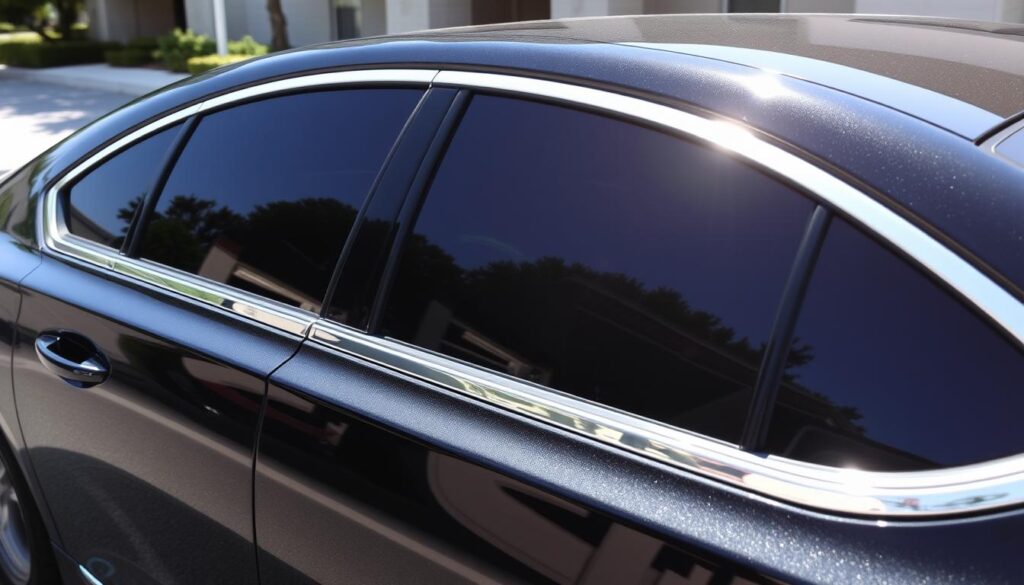
Understanding Window Tint Materials
The performance of window tint largely depends on the materials used in its construction. Here’s a breakdown of the main types available in 2025:
| Film Type | Technology | Heat Rejection | Durability | Signal Interference | Price Range |
| Dyed Film | Colored dye in polyester | 40-50% | 3-5 years | None | $ |
| Metalized Film | Embedded metal particles | 65-75% | 5-10 years | Moderate to High | $$ |
| Carbon Film | Carbon particles | 70-80% | 7-10 years | None | $$ |
| Ceramic Film | Nano-ceramic particles | 80-98% | 10+ years | None | $$$ |
| Multi-Layer Optical | Nano-layered structure | 90-98% | 10+ years | None | $$$ |
Ceramic and multi-layer optical films represent the cutting edge of window tint technology in 2025, offering superior heat rejection without the signal interference issues associated with metalized films. While they come at a premium price point, their performance and longevity make them the best car window tint options for most vehicle owners.
Detailed Reviews of the Best Car Window Tint in 2025
1. XPEL PRIME XR PLUS – Editor’s Choice
XPEL PRIME XR PLUS stands out as our top choice for the best car window tint in 2025, offering industry-leading heat rejection and clarity. This premium ceramic film utilizes multi-layer nano-ceramic technology to block up to 98% of infrared heat while maintaining crystal-clear visibility. With its non-metal construction, it won’t interfere with electronic signals, making it ideal for modern vehicles with advanced connectivity features.
| Nano-Ceramic | 98% |
| 99.9% | 20%, 35%, 50%, 70% |
| None | Lifetime |
| Professional | $$$ |
Pros
- Industry-leading 98% heat rejection
- Exceptional clarity with minimal reflectivity
- Lifetime warranty against fading, bubbling, and peeling
- No signal interference with electronics
Cons
- Premium price point
- Requires professional installation
- Limited availability in some regions
Users consistently praise XPEL PRIME XR PLUS for its remarkable ability to keep vehicle interiors cool even in extreme heat. Many report noticeable differences in comfort and reduced air conditioning usage. The clarity of the film is another highlight, with drivers appreciating the natural appearance that doesn’t compromise visibility.
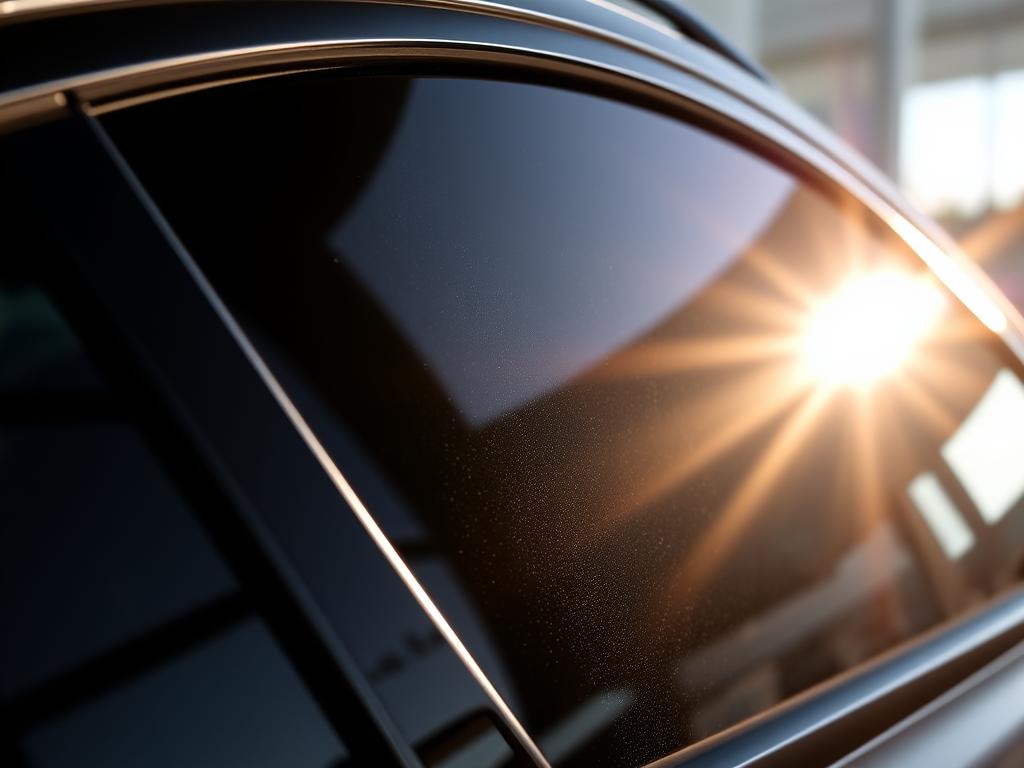
2. 3M Crystalline Series
The 3M Crystalline Series represents the pinnacle of multi-layer optical film technology, offering exceptional heat rejection while maintaining remarkable clarity. With over 200 layers of optical film that are thinner than a Post-it Note, this premium window tint blocks heat without the darkness typically associated with traditional tints. It’s the perfect choice for drivers who want maximum performance without changing their vehicle’s appearance.
| Multi-Layer Optical | 97% |
| 99.9% | 40%, 50%, 60%, 70%, 90% |
| None | Limited Lifetime |
| Professional | $$$ |
Pros
- Exceptional clarity with high VLT options
- Superior heat rejection (97%)
- No signal interference
- Backed by 3M’s reputation for quality
Cons
- Among the most expensive options
- Requires certified professional installation
- Less privacy than darker tints
Customers who choose 3M Crystalline consistently highlight its “invisible” quality while still providing remarkable heat reduction. Many luxury vehicle owners prefer this tint for its ability to maintain the factory appearance while significantly improving comfort. The high-VLT options make it popular in regions with strict tint laws.
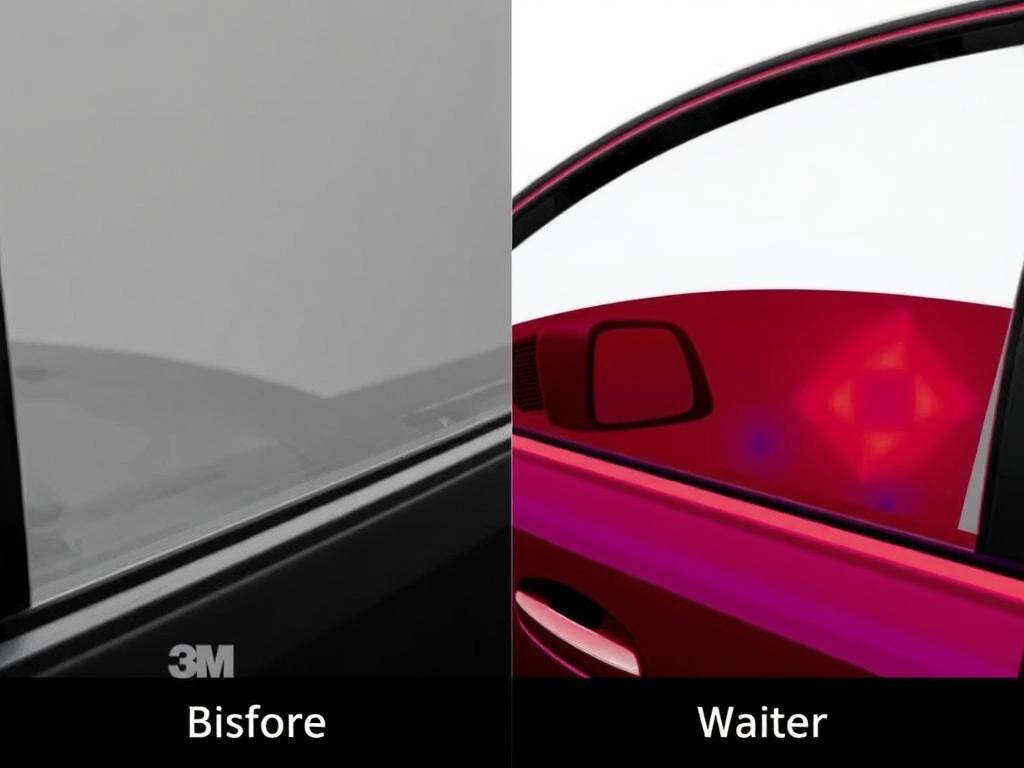
3. LLumar CTX Ceramic Tint
LLumar CTX represents the perfect balance of performance, aesthetics, and value in the ceramic window tint category. With over 60 years of experience in the industry, LLumar has refined their ceramic technology to deliver excellent heat rejection and UV protection without breaking the bank. The CTX series offers a non-reflective appearance that enhances your vehicle’s look while providing superior comfort.
| Ceramic | 95% |
| 99% | 15%, 25%, 30%, 40%, 50%, 70% |
| None | Limited Lifetime |
| Professional | $$ |
Pros
- Excellent 95% heat rejection
- Wide range of VLT options
- Non-reflective, natural appearance
- Better value than top-tier options
Cons
- Slightly less heat rejection than premium options
- Professional installation required
- Some users report minor color variations
LLumar CTX users frequently comment on the excellent balance of performance and value. Many appreciate the non-reflective finish that provides a factory-like appearance while still delivering impressive heat reduction. The wide range of VLT options makes it versatile for different preferences and legal requirements.
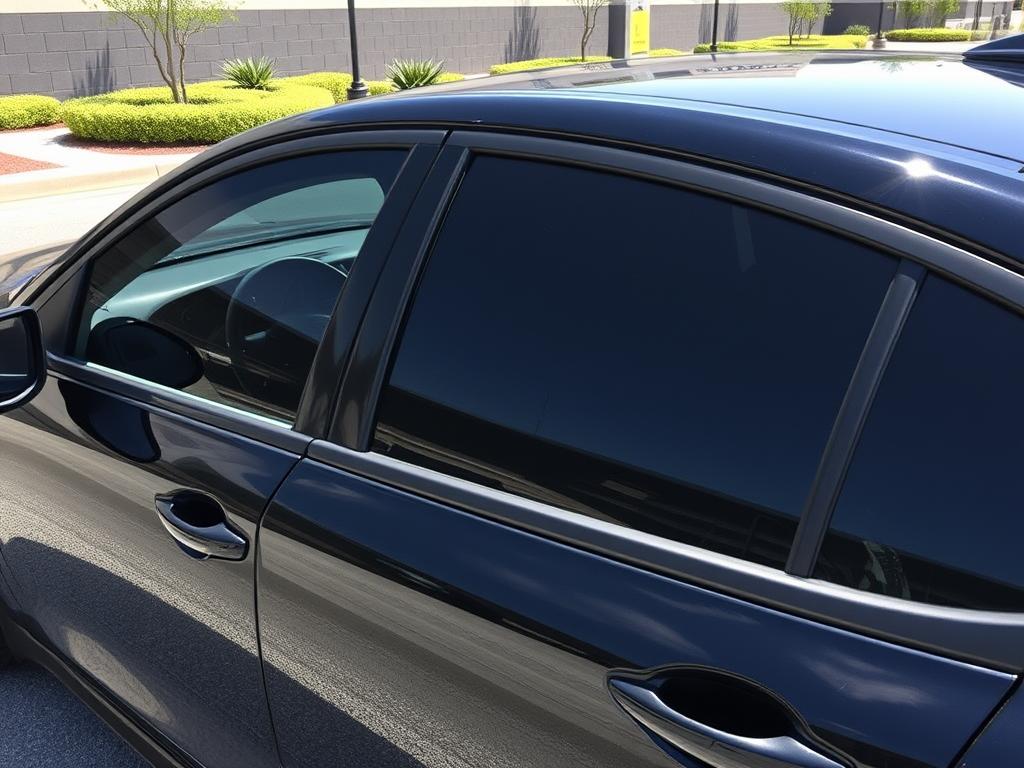
4. SunTek CXP Ceramic
SunTek CXP Ceramic offers exceptional durability and performance at a competitive price point. This ceramic window tint provides excellent heat rejection and UV protection while maintaining good clarity and a non-reflective appearance. SunTek’s proprietary ceramic technology ensures long-lasting performance without fading or purpling over time, making it an excellent choice for drivers seeking reliability.
| Ceramic | 93% |
| 99% | 20%, 25%, 35%, 45%, 55%, 70% |
| None | Limited Lifetime |
| Professional | $$ |
Pros
- Strong 93% heat rejection performance
- Excellent durability and fade resistance
- Good value for ceramic technology
- Non-reflective finish
Cons
- Slightly less heat rejection than top options
- Limited availability in some areas
- Professional installation required
SunTek CXP users consistently praise its durability and performance over time. Many report that even after several years, the tint maintains its appearance and heat-rejecting properties. The non-reflective finish is another frequently mentioned benefit, providing a clean, factory-like appearance that enhances vehicle aesthetics.
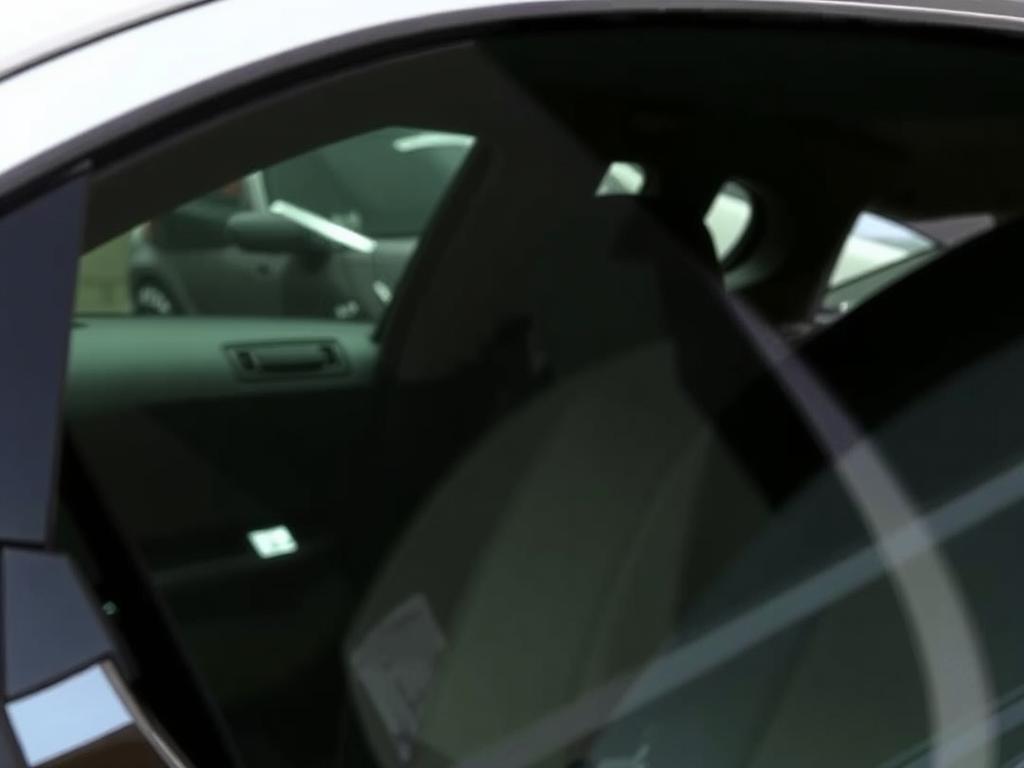
5. Huper Optik Ceramic 30
Huper Optik Ceramic 30 is a premium window tint that combines German engineering with advanced ceramic technology. Known for its exceptional quality and precision manufacturing, this tint delivers excellent heat rejection while maintaining a sophisticated appearance. The patented nano-ceramic technology provides consistent performance without the metallic appearance of traditional films.
| Nano-Ceramic | 90% |
| 99% | 30%, 40%, 50%, 70% |
| None | Limited Lifetime |
| Professional | $$$ |
Pros
- Premium German-engineered quality
- Excellent color stability
- Sophisticated, non-reflective appearance
- Strong heat rejection performance
Cons
- Premium price point
- Fewer VLT options than some competitors
- Limited availability
Luxury vehicle owners particularly appreciate Huper Optik’s attention to detail and quality. Many users report that the tint enhances the vehicle’s appearance while providing excellent heat reduction. The color stability is frequently praised, with the tint maintaining its appearance without fading or changing color over time.
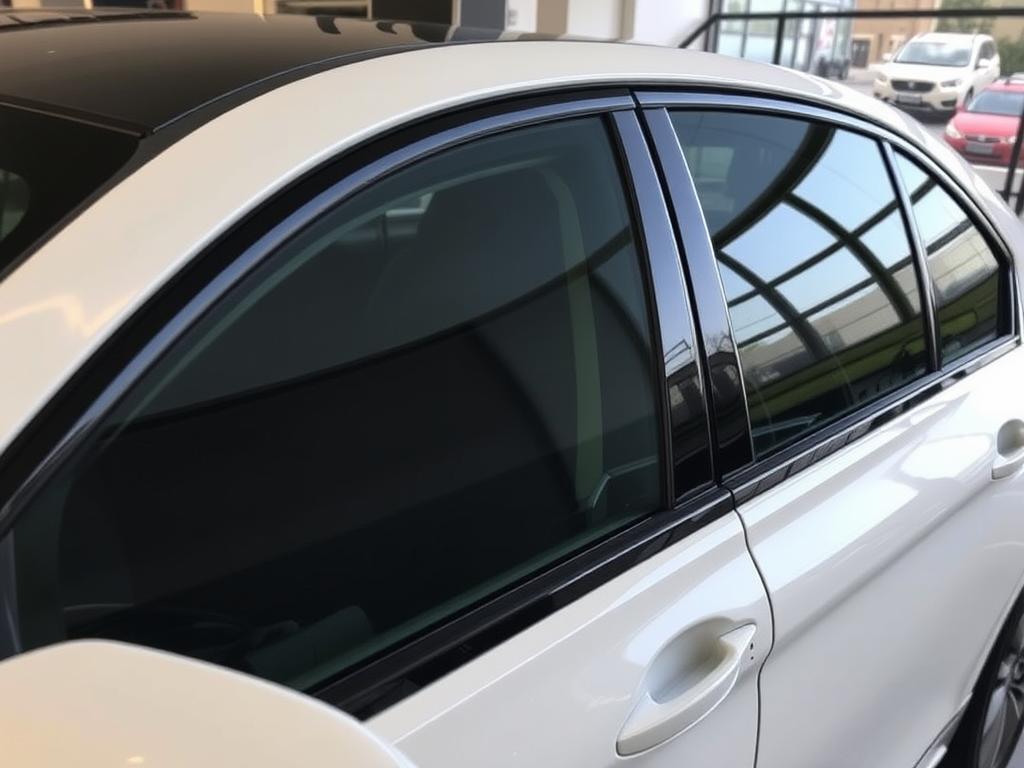
Why XPEL PRIME XR PLUS Is Our Editor’s Choice
After comprehensive testing and analysis, XPEL PRIME XR PLUS emerges as our Editor’s Choice for the best car window tint in 2025. Its industry-leading 98% heat rejection, 99.9% UV protection, and lifetime warranty set it apart from the competition. The exceptional clarity and non-reflective finish maintain your vehicle’s appearance while providing superior protection.
Heat Rejection Champion
With 98% infrared heat rejection, XPEL outperforms even premium competitors like 3M Crystalline (97%) and LLumar CTX (95%). This translates to noticeably cooler interior temperatures and reduced air conditioning usage.
Clarity & Appearance
XPEL’s nano-ceramic technology provides exceptional clarity without the metallic or reflective appearance of other films. The natural look enhances your vehicle’s aesthetics while delivering superior performance.
Longevity & Warranty
Backed by a comprehensive lifetime warranty against fading, bubbling, and peeling, XPEL offers peace of mind that justifies its premium price point. The color stability ensures consistent performance throughout the life of your vehicle.
Ready to Experience the Best Window Tint?
Upgrade your driving comfort with XPEL PRIME XR PLUS and enjoy superior heat rejection, UV protection, and clarity.
How to Choose the Best Car Window Tint for Your Needs

Understanding Legal Requirements
Before selecting a window tint, it’s crucial to understand your state’s legal requirements regarding visible light transmission (VLT). VLT percentages indicate how much light passes through the tint—lower numbers mean darker tint. Legal limits vary by state:
| State | Front Side Windows | Rear Side Windows | Rear Window | Windshield |
| California | 70% | Any darkness | Any darkness | Top 4 inches only |
| Florida | 28% | 15% | 15% | Top 6 inches only |
| Texas | 25% | 25% | 25% | Top 5 inches only |
| New York | 70% | 70% | 70% | Top 6 inches only |
Key Performance Factors to Consider
Heat Rejection
Heat rejection is measured as a percentage of infrared rays blocked by the window tint. Higher percentages mean better performance:
- 90-98%: Premium ceramic and multi-layer optical films (best performance)
- 70-89%: Standard ceramic and quality carbon films
- 40-69%: Metalized and budget films
For optimal comfort, especially in hot climates, prioritize tints with at least 90% heat rejection.
UV Protection
UV protection is crucial for preventing interior fading and protecting skin health. Most quality window tints offer 99% UV protection, but verify this specification when comparing options.
Visible Light Transmission (VLT)
VLT indicates how dark the tint appears and how much visible light passes through:
- 70-90%: Very light tint, barely noticeable
- 50-60%: Light tint, good balance of privacy and visibility
- 35-45%: Medium tint, enhanced privacy with good visibility
- 20-30%: Dark tint, significant privacy (check local laws)
- 5-15%: Very dark tint, maximum privacy (often illegal for front windows)
Material Quality and Durability
The material of your window tint significantly impacts its performance and longevity:
- Superior heat rejection (80-98%)
- No signal interference
- Excellent durability (10+ years)
- Non-reflective appearance
- Premium price point
Ceramic Films
- Good heat rejection (70-80%)
- No signal interference
- Good durability (7-10 years)
- Matte black appearance
- Mid-range price point
Carbon Films
- Moderate heat rejection (65-75%)
- Potential signal interference
- Good durability (5-10 years)
- Reflective appearance
- Mid-range price point
Metalized Films
- Basic heat rejection (40-50%)
- No signal interference
- Limited durability (3-5 years)
- Can fade over time
- Budget price point
Dyed Films
Installation Considerations
Even the best window tint can perform poorly if improperly installed. Consider these factors:
- Professional Installation: Most premium window tints require professional installation to ensure proper adhesion, bubble-free application, and warranty coverage.
- DIY Options: Some budget films offer DIY kits, but these typically don’t provide the same quality or longevity as professionally installed options.
- Installation Cost: Professional installation typically costs $200-$600 depending on vehicle size and tint quality.
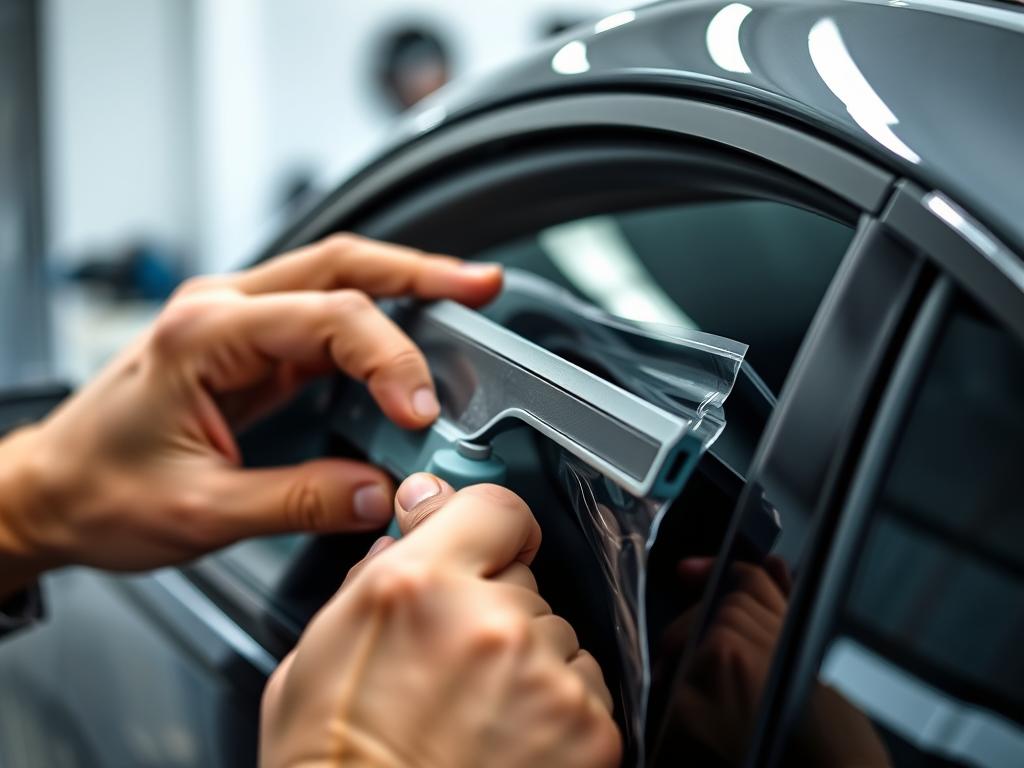
Budget Considerations
Window tint prices vary significantly based on material quality and performance:
| Price Tier | Material Type | Total Cost (with installation) | Performance | Longevity |
| Budget ($) | Dyed Films | $150-$300 | Basic | 3-5 years |
| Mid-Range ($$) | Carbon/Basic Ceramic | $300-$500 | Good | 7-10 years |
| Premium ($$$) | Advanced Ceramic/Optical | $500-$800+ | Excellent | 10+ years |
When considering budget, factor in the long-term benefits of premium window tints, including improved comfort, reduced AC usage, interior protection, and longer lifespan. For most vehicle owners, mid-range to premium ceramic options offer the best balance of performance and value.
Frequently Asked Questions About Car Window Tint
Which window tint is best for heat rejection?
Ceramic and multi-layer optical films provide the best heat rejection, with top performers like XPEL PRIME XR PLUS and 3M Crystalline blocking up to 98% of infrared heat. These premium options significantly outperform dyed films (40-50% rejection) and metalized films (65-75% rejection). For maximum heat reduction, especially in hot climates, ceramic technology offers the best performance without signal interference issues.
How long does quality window tint last?
The lifespan of window tint varies by material quality and environmental conditions:
- Premium ceramic tints: 10+ years
- Carbon films: 7-10 years
- Metalized films: 5-10 years
- Dyed films: 3-5 years
Factors that can reduce lifespan include extreme heat, improper cleaning (using ammonia-based products), and poor installation. Most premium brands offer lifetime warranties against fading, bubbling, and peeling when professionally installed.
What’s the darkest legal tint for my state?
Legal tint darkness (VLT) varies significantly by state. For front side windows, some examples include:
- California, New York, New Jersey: 70% VLT (very light)
- Florida: 28% VLT
- Texas, Arizona: 25% VLT
- Nevada, Colorado: 35% VLT
Many states allow darker tints for rear windows. Always check your specific state’s current regulations before purchasing, as laws can change and enforcement varies by jurisdiction.
Can I install window tint myself?
While DIY window tint kits are available, professional installation is strongly recommended, especially for premium films. Proper installation requires specialized tools, dust-free environments, and significant experience to avoid bubbles, creases, and improper adhesion. Most manufacturer warranties are only valid with professional installation. DIY installation risks include:
- Bubbles and debris trapped under the film
- Improper cutting that damages defroster lines
- Peeling and premature failure
- Voided warranties
The additional cost of professional installation is typically worthwhile for long-term performance and appearance.
Will window tint interfere with my electronics?
Modern ceramic and carbon window tints do not interfere with electronic signals. However, metalized films (which contain tiny metal particles) can potentially disrupt:
- GPS navigation signals
- Cell phone reception
- Radio signals
- Electronic toll collection devices
If you’re concerned about signal interference, choose ceramic or carbon-based window tints like XPEL PRIME XR PLUS, 3M Crystalline, or LLumar CTX, which provide excellent heat rejection without metal content.
How do I maintain and clean tinted windows?
Proper maintenance extends the life of your window tint:
- Wait 2-4 days after installation before cleaning to allow proper curing
- Use ammonia-free cleaners (ammonia damages tint)
- Clean with soft microfiber cloths to avoid scratching
- Avoid abrasive materials like paper towels or newspaper
- Use gentle window cleaners specifically formulated for tinted windows
A simple solution of mild soap and water works well for routine cleaning. Spray the solution on the window and wipe gently with a microfiber cloth for best results.
Is ceramic tint worth the extra cost?
For most vehicle owners, ceramic window tint justifies its premium price through superior performance and longevity. Compared to standard dyed or metalized films, ceramic tints offer:
- 20-40% better heat rejection
- No signal interference
- Better clarity and non-reflective appearance
- 2-3 times longer lifespan
- Superior fade resistance
When factoring in the extended lifespan (10+ years vs. 3-5 years for budget films), improved comfort, and potential energy savings from reduced AC usage, ceramic tints often provide better long-term value despite the higher initial investment.
Final Thoughts: Choosing the Best Car Window Tint in 2025
Investing in high-quality window tint is one of the most effective ways to enhance your driving comfort, protect your vehicle’s interior, and improve privacy. The best car window tint options in 2025 offer remarkable heat rejection, UV protection, and durability that justify their cost through long-term performance.
For maximum performance regardless of price, XPEL PRIME XR PLUS stands out as our Editor’s Choice with industry-leading 98% heat rejection and exceptional clarity. For those seeking the perfect balance of performance and value, LLumar CTX and SunTek CXP provide excellent alternatives with slightly lower price points. Budget-conscious shoppers should consider ASWF Ceramic Series, which offers good performance at a more accessible price.
Remember to consider your specific needs, local legal requirements, and long-term value when making your selection. Professional installation is strongly recommended for all window tint options to ensure optimal performance and warranty coverage.
Ready to Upgrade Your Vehicle with Premium Window Tint?
Browse our top recommendations and find the perfect window tint for your needs.


